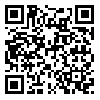BibTeX | RIS | EndNote | Medlars | ProCite | Reference Manager | RefWorks
Send citation to:
URL: http://rjms.iums.ac.ir/article-1-582-en.html
Background & Aim: Increased antibiotic resistance of organisms in recent years is a worrisome problem. This problem is greater in third world countries due to antibiotics misuse, cultural problems and etc. Various countries of the world report their antibiotic resistance results every year to help clinicians use appropriate treatment strategies. We have also observed dramatic increase of antibiotic resistance in our country in recent years. The most important aim of this research was to represent increased antibiotic resistance in Iran to warn medical practitioners against unnecessary application of antibiotics and make government change agricultural, husbandry, and other strategies. Patients and Methods: This study was performed on 700 aerobic micro-organisms separated from abscesses and wounds during 1999 to 2003 in Firoozgar and Hazrat Rasoul Hospitals. Micro-organisms were cultured on blood agar mac conkey media and then their antibiograms were performed with standard antibiotic disks and results were reported in the form of percent resistance percentage. Results: The most prevalent organism responsible for wounds and abscesses is staphylococcus aureus followed by gram negative organisms like E.coli and Klebsiella… Percentage of antibiotic resistance(resistance to three or more antibiotics) is 77.7 for staphylococcus aureus, 96 for pseudomonas, 100 for acineto bacter, 77 for E.coli, 90 for klebsiella and 83 for enterobacter. These results are significantly greater than reports from other countries even in third world countries like Pakistan and Saudi Arabia. Ciprofloxacin(after vancomycin) and amikacin and ciprofloxacin are the best drugs with the least resistancy for gram positives and gram negatives respectively. Conclusion: This study clarified that antibiotic resistance situation is worrisome in Iran and strategies such as avoidance of inappropriate antibiotic application, their misuse in agriculture and better hygiene and sterilization in hospitals are strongly recommended.





